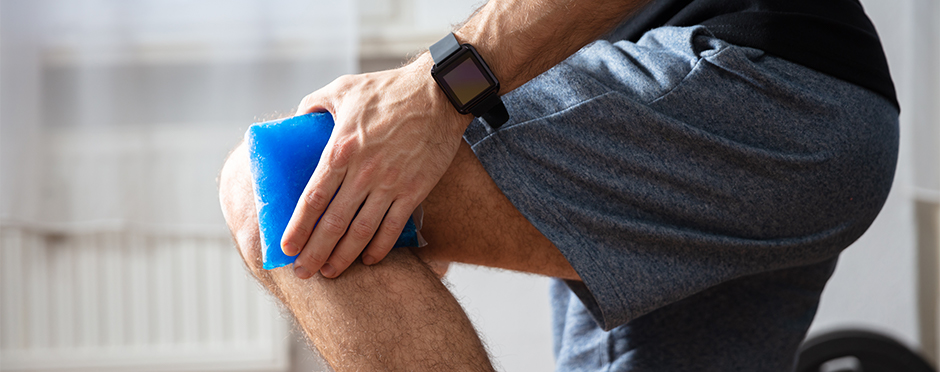

Have you ever experienced an injury and wondered if you should ice? It’s usually a great idea, but there are some rules you need to follow so you don’t worsen your injury. Read below to learn, “is ice helpful?” and “when do I ice for an injury?” Simply put, ice is best initially for acute (recent) injuries within the first 48 hours, while heat is generally used for chronic (long term) conditions. 1,2
Ice used after an acute or recent injury serves many purposes such as reducing pain and muscle spasm, allowing you to function with a better quality of life. 1,3,4 The greatest purpose, however, is that ice can help minimize inflammation around the injury by constricting blood vessels and reducing bleeding into the nearby area. But we need to understand something here. Acute inflammation is actually a GOOD thing. When the body gets injured, it signals your immune system to send out an army of white blood cells to surround, clean up, and protect the area. 5 This will make the area swollen and painful so you don’t do any further damage, and allow the body to heal itself. 5 This idea causes some debate whether or not ice is good for you after all, but there is evidence to show that ice doesn’t impede your tissue healing, 6 and that it may help return you to activity faster than not icing. 7 Ice also seems to help decrease the amount of prescription medication use after surgery. 1,4
Research gives you a 48 hour window to ice, 1,2 but icing as soon as you can to the affected area will improve pain and swelling. For additional benefits, elevating the limb above your heart, gentle pain free motion of the joint/muscle and adding compression such as an elastic bandage or elastic sleeve can help. Just ensure you don’t over tighten the compression garment. You can do this by ensuring your fingers/toes below the injury stay the same temperature before and after applying compression indicating that you are not cutting off circulation.
It is generally not recommended to ice an acute or recent injury after the first 48 hours. 1,2 At this point, you may be better off protecting the area and starting to move the joint or muscle in a pain-free range. As a former athlete, I never liked the idea of simply “staying off the joint” while recovering from a strain or sprain, but rather slowly getting the muscle/joint activated while minimizing pain to help facilitate repair, strengthen and reduce muscle weakness. Research also tends to agree with this as prolonged rest may delay recovery and adversely affect the tissue repair long term, 8 It is best to follow your primary doctor or therapist’s order on how and when it is safe to progress following injury.
It is not recommended to ice before activity. For example, if your knee hurts and you’re about to go for a walk/run, it is NOT a good idea to ice your knee before as it will make your knee more stiff and susceptible to more injury. It’s like taking a rubber band, tossing it in the freezer, and expecting it to work well. Instead warming up the knee with light exercise or a few minutes of applied heat to the area can better prepare you for your activity. Afterwards, ice can be used.
If ice just doesn’t seem to help you or if you notice that it is making your problems worse, stop icing altogether. Instead, follow some of these tips.
If you’ve been icing an injury and still experience pain, contact an Athletico near you. Start by scheduling a free assessment which could get you started in physical therapy right away. Free assessments are available in-clinic and virtually through our Telehealth platform.
The Athletico blog is an educational resource written by Athletico employees. Athletico bloggers are licensed professionals who abide by the code of ethics outlined by their respective professional associations. The content published in blog posts represents the opinion of the individual author based on their expertise and experience. The content provided in this blog is for informational purposes only, does not constitute medical advice and should not be relied on for making personal health decisions.